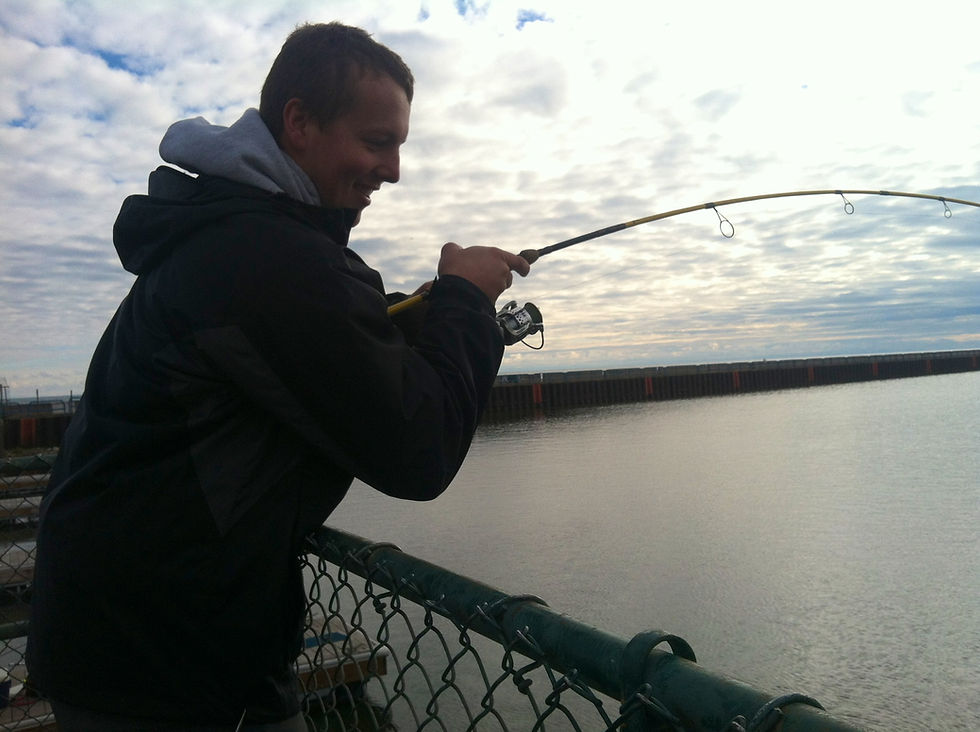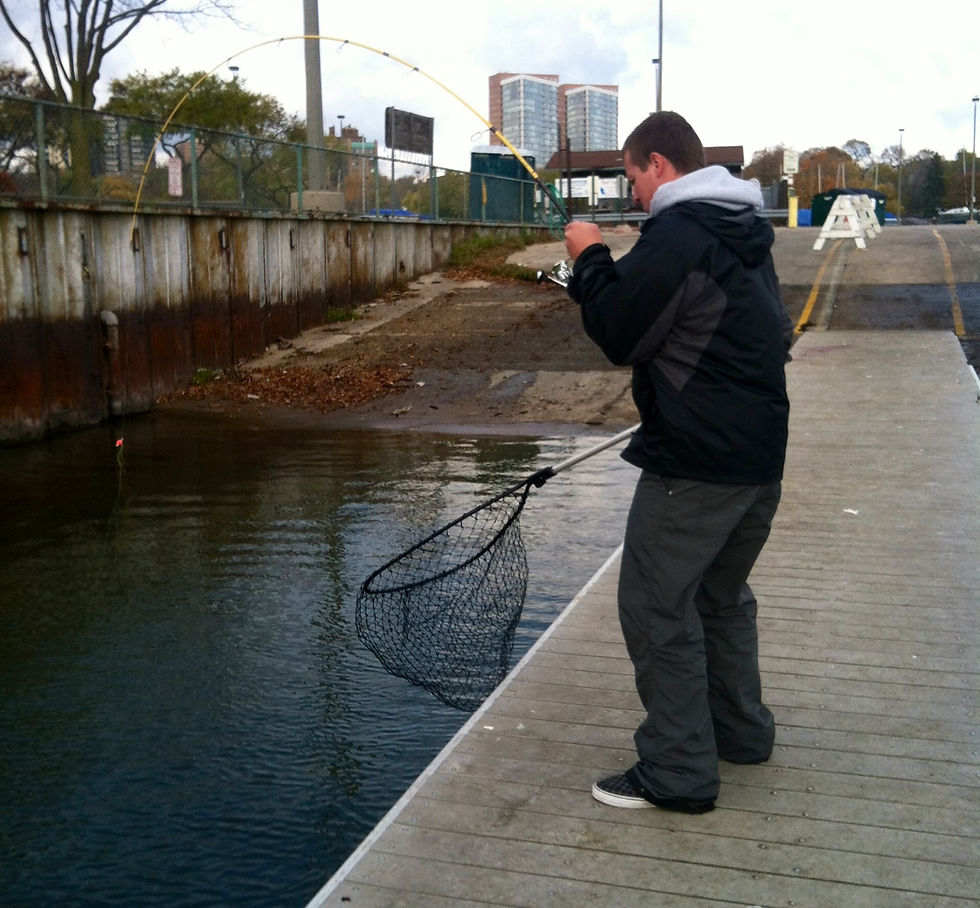Late Summer/Fall Salmon From Shore (Part 2)

With summer winding down and the cool mornings of fall upon us, the salmon run is in full swing all along the shores of Lake Michigan. In my previous piece (Part 1) I discussed my most successful shore casting techniques for targeting salmon. Although these same techniques can still produce fish there are other tactics that can prove more successful as fall rolls in.
At times it is nearly impossible to beat fishing with spawn or skein under a slip bobber. "What in the hell is he talking about...spawn and skein..." you be asking yourself. Well it just might be your ticket to some killer fall salmon action. The terms "spawn" and "skein" refer to salmon eggs which are used as bait. In the fall as the mature salmon spawn and undergo morphological changes (the most obvious of which being a color change from bright silver to shades of brown), as well as a change in diet.

During this time the only thing on their agenda is to spawn. That is it. Not to eat, and not to enroll in an underwater basket weaving class. Yes, a salmon will still hit a lure, however they are not hitting it out of "hunger" but rather due to what we call a reaction strike. A similar occurrence takes place when the female salmon (hens) release their eggs. As the eggs fall fish will sometimes swarm the falling clusters and eat them.

So what exactly IS spawn and skein? Spawn is loose, individual eggs that are commonly tied into what is known as a spawn sack to imitate a cluster of eggs drifting in the water.

Skein on the other hand is a cluster of eggs that is harvested from hen salmon prior to the spawn that are still held together by a thin membrane.

Both options produce fish consistently, however on some days the fish certainly have a preference of one over the other. You can purchase spawn and skein from local guides along the shores of Lake Michigan and at some sporting good retailers, or with a little know how you can make your own at home for next to nothing. CLICK HERE to check out an awesome "how to" article by Madison's own Israel Dunn (AKA the Shorebound Hero) on how to cure your own skein at home.
With your bait terminology all sorted out, lets get to the actual nuts and bolts of the rig. This is about as simple as it gets: hook, sinker, bobber. On the business end of the rig I like to use either a size 2, 6, or 8 octopus hook such as the Lazer Trokar TK14. A wide hook gap and a super sharp point helps to ensure higher hooking percentages when using this technique. As salmon do have teeth and the water in Lake Michigan is generally very clear, I like to use a 20" 14lb flourocarbon leader which I connect to my 30lb braided main line (a must when fishing around piers and rocks) with a ball bearing swivel. As far as bobbers are concerned, I like something highly visible and easy for the fish to take under. Slap a couple of size 8 split shots about 10" above your hook, and you are ready to rock.

On the rod and reel end of this setup I like a spinning combo consisting of an 8' 6" medium power rod and a 35-40 size reel. My rod of choice is the Eagle Claw Powerlight. The lighter and longer rod helps to easily fight fish and provides plenty of forgiveness when fish take off on blistering runs. It also makes you less likely to put too much force on a fish resulting in pulling the hook out of their mouth.
The depth at which you should set your bobber can vary depending on the day and conditions. Some days setting it just under the surface produces the most bites, while on other days letting it sit on the bottom will give you the most action. Let the fish tell you what they want! Now is the time to get out and give shore fishing for trophy salmon a try. Stay tuned for a report later this week (week of 9/19/16) on my trip to Milwaukee. Tight lines!



























